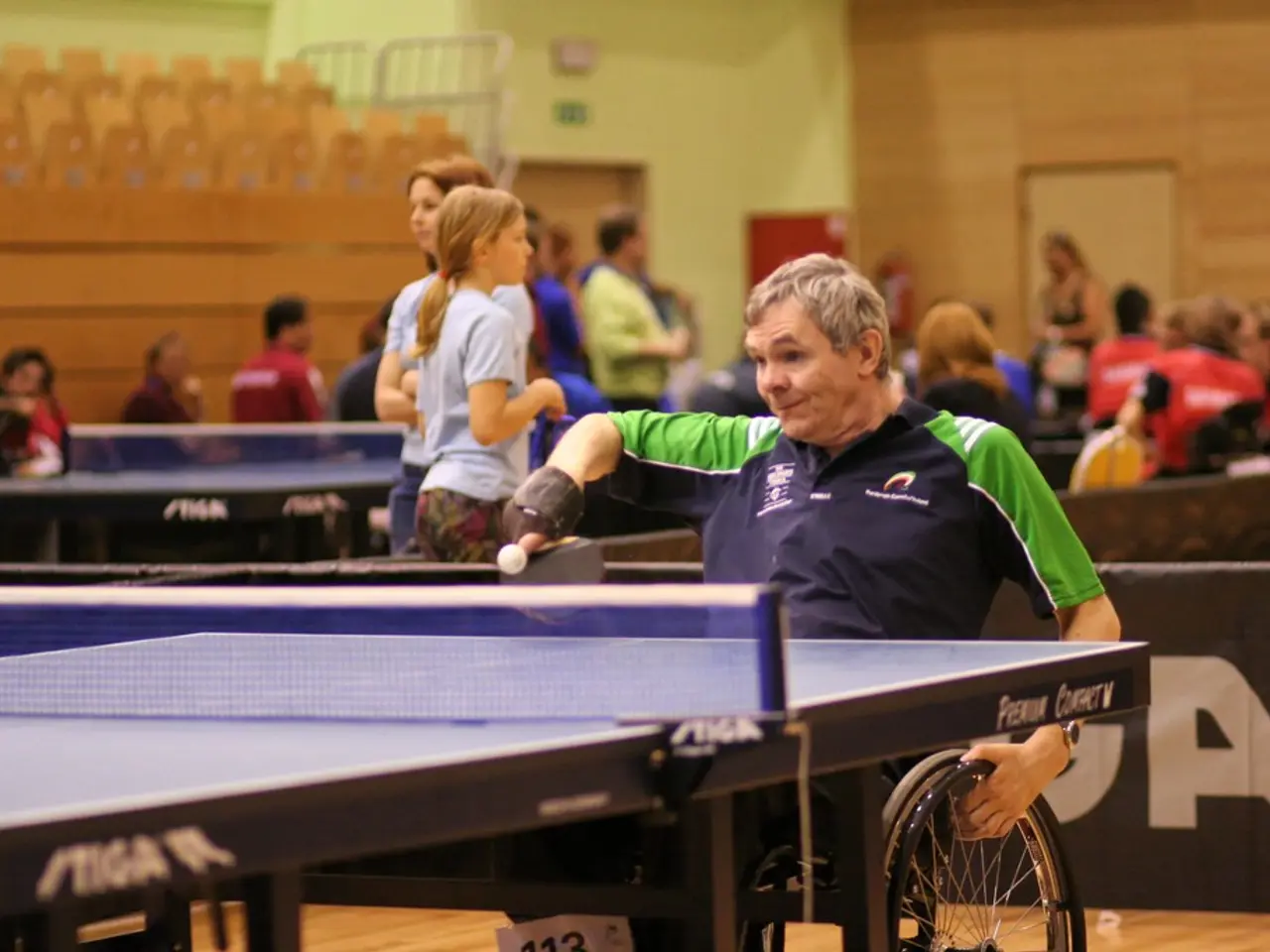Symptoms, Diagnosis, and Treatment of Rheumatoid Arthritis Without Positive Serology Results
In the realm of rheumatoid arthritis (RA), a common autoimmune disease, there exists a subcategory known as seronegative RA. Unlike its seropositive counterpart, seronegative RA is characterised by the absence of specific antibodies, leading to unique challenges in diagnosis and treatment.
### Diagnosis Dilemmas
Traditionally, seropositive RA patients test positive for rheumatoid factor (RF) and anti-cyclic citrullinated peptide (anti-CCP) antibodies, which serve as clear diagnostic markers. In contrast, seronegative RA patients lack these antibodies, making blood tests less informative. Diagnosis relies more heavily on clinical symptoms, imaging evidence of joint damage, and inflammatory markers [1][3].
The absence of these markers means that diagnosing seronegative RA can be more complex and may require more careful symptom evaluation and imaging studies [3]. Research suggests that seronegative RA may involve more of the innate immune system, with different genetic associations, which could explain the diagnostic differences [3].
### Treatment Tailoring
Both seropositive and seronegative RA require management of inflammation and joint damage. Treatment often includes disease-modifying antirheumatic drugs (DMARDs) and biologics to control immune activity. However, since seronegative RA lacks hallmark antibodies, monitoring treatment response relies more on clinical symptoms, inflammatory markers, and imaging rather than antibody levels [1].
Seronegative RA may have a different clinical course, with some studies showing that patients with seronegative RA have a higher risk for complications like carpal tunnel syndrome and may require more interventions compared with seropositive patients [2]. Due to different immune mechanisms, seronegative RA might respond differently to certain therapies, and treatment decisions can be more tailored to symptom control and preventing structural damage [3].
### Lifestyle Management
Certain foods may help manage the symptoms of RA, such as following an anti-inflammatory diet that emphasises plant-based foods, fresh fruits and vegetables, nuts and seeds, lean meat, low-fat dairy or dairy alternatives, whole grains, and foods high in Omega-3 fatty acids, which may ease pain and stiffness in tender joints. On the other hand, foods high in Omega-6 fatty acids, such as corn, safflower, soybean, and sunflower oils, as well as hamburgers, chicken, and meats grilled or fried at a high temperature, processed and fatty meats, processed foods and foods high in saturated fats, foods containing added sugar and salt, and smoking tobacco and drinking a lot of alcohol, can increase the risk of joint inflammation and obesity [4].
### Summary
In conclusion, seronegative RA diagnosis depends more on clinical and imaging findings due to absent antibody markers, and its treatment requires close symptom and inflammation monitoring. The underlying immune differences may influence disease behavior and response to therapy [1][2][3]. While the absence of antibodies may complicate diagnosis, advancements in imaging technology and understanding of the disease have made it possible to diagnose and manage seronegative RA effectively.
References: [1] American College of Rheumatology. (2019). Seronegative Rheumatoid Arthritis. Arthritis Foundation. https://www.arthritis.org/health-wellness/disease-management/rheumatoid-arthritis/seronegative-rheumatoid-arthritis [2] Klareskog L. (2016). Seronegative rheumatoid arthritis: a distinct disease or a variant of rheumatoid arthritis? Annals of the Rheumatic Diseases, 75(8), 1378-1385. doi:10.1136/annrheumdis-2015-208281 [3] Smith, A. D., & Kalden, J. R. (2017). Seronegative rheumatoid arthritis: an update on epidemiology, pathogenesis, and treatment. Rheumatology, 56(Suppl 6), v1-v3. doi:10.1093/rheumatology/kew329 [4] Arthritis Foundation. (2020). Foods to Avoid and Foods to Eat with Rheumatoid Arthritis. Arthritis Foundation. https://www.arthritis.org/living-with-arthritis/arthritis-diet/rheumatoid-arthritis-diet/foods-to-avoid-with-rheumatoid-arthritis/ [5] Arthritis Foundation. (2020). What to Know about Rheumatoid Arthritis. Arthritis Foundation. https://www.arthritis.org/diseases/rheumatoid-arthritis
- Due to the absence of specific antibodies, diagnosing seronegative rheumatoid arthritis may be more challenging compared to seropositive RA, relying more on clinical symptoms, imaging evidence, and inflammatory markers.
- Science suggests that seronegative rheumatoid arthritis might involve different genetic associations and more of the innate immune system, which could explain the unique challenges in diagnosing and treating this medical condition.
- Navigating treatment options for seronegative rheumatoid arthritis can be different from seropositive RA as monitoring treatment response relies more heavily on clinical symptoms, inflammatory markers, and imaging rather than antibody levels.
- The health and wellness industry emphasizes the importance of managing lifestyle factors like following an anti-inflammatory diet and engaging in regular fitness and exercise to ease the symptoms of rheumatoid arthritis, regardless of whether a person has seronegative or seropositive RA.
- Chronic diseases, such as rheumatoid arthritis, place a significant burden on individuals' quality of life, and effective management often involves addressing both medical-conditions and lifestyle factors for long-term health and wellness.




